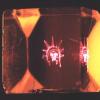http://www.scienceda...31014155741.htm
Compound Derived from Vegetables Shields Rodents from Lethal Radiation Doses
Oct. 14, 2013 — Georgetown University Medical Center researchers say a compound derived from cruciferous vegetable such as cabbage, cauliflower and broccoli protected rats and mice from lethal doses of radiation.
Their study, published today in the Proceedings of the National Academy of Sciences (PNAS) suggests the compound, already shown to be safe for humans, may protect normal tissues during radiation therapy for cancer treatment and prevent or mitigate sickness caused by radiation exposure.
The compound, known as DIM (3,3'-diindolylmethane), previously has been found to have cancer preventive properties.
"DIM has been studied as a cancer prevention agent for years, but this is the first indication that DIM can also act as a radiation protector," says the study's corresponding author, Eliot Rosen, MD, PhD, of Georgetown Lombardi Comprehensive Cancer Center.
For the study, the researchers irradiated rats with lethal doses of gamma ray radiation. The animals were then treated with a daily injection of DIM for two weeks, starting 10 minutes after the radiation exposure.
The result was stunning, says Rosen, a professor of oncology, biochemistry and cell & molecular biology, and radiation medicine. "All of the untreated rats died, but well over half of the DIM-treated animals remained alive 30 days after the radiation exposure."
Rosen adds that DIM also provided protection whether the first injection was administered 24 hours before or up to 24 hours after radiation exposure.
"We also showed that DIM protects the survival of lethally irradiated mice," Rosen says. In addition, irradiated mice treated with DIM had less reduction in red blood cells, white blood cells and platelets -- side effects often seen in patients undergoing radiation treatment for cancer.
Rosen says this study points to two potential uses of the compound. "DIM could protect normal tissues in patients receiving radiation therapy for cancer, but could also protect individuals from the lethal consequences of a nuclear disaster."
Story Source:
The above story is based on materials provided by Georgetown University Medical Center.
Note: Materials may be edited for content and length. For further information, please contact the source cited above.
Journal Reference:
- S. Fan, Q. Meng, J. Xu, Y. Jiao, L. Zhao, X. Zhang, F. H. Sarkar, M. L. Brown, A. Dritschilo, E. M. Rosen. DIM (3,3'-diindolylmethane) confers protection against ionizing radiation by a unique mechanism. Proceedings of the National Academy of Sciences, 2013; DOI: 10.1073/pnas.1308206110












































